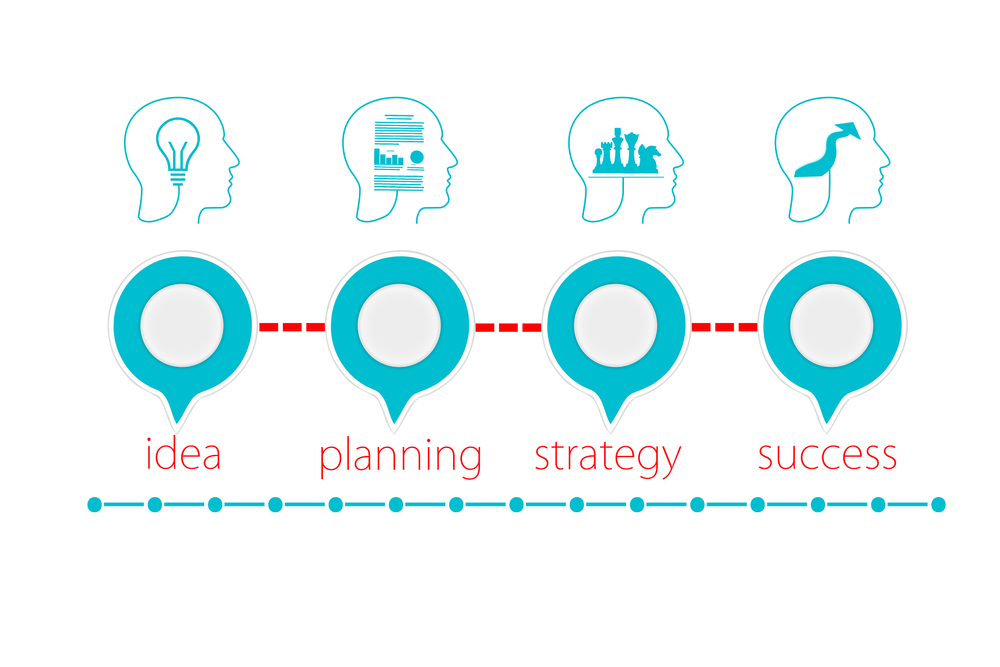This article is part of a blog series on smart cites and what services they provide.
The benefits of smart cities are as follows:
- a safer environment
- healthier lives for their residents
- improved quality of life for their inhabitants and visitors
- great opportunities for their engineers, designers, and other professionals to drive projects that remove social and construction barriers toward responsible and long-term innovations.
What is a Smart City?

According to TWI Global, smart cities
Use information and communication technology (ICT) to improve operational efficiency, share information with the public and provide a better quality of government service and citizen welfare. The main goal of a smart city is to optimize city functions and promote economic growth while also improving the quality of life for citizens by using smart technologies and data analysis. The value lies in how this technology is used rather than simply how much technology is available.
To improve the quality of life in normal towns, it is helpful to use technologies like the Internet of Things (IoT) and Information and Information Communication Technologies (ICT)
The power of IoT
IoT has a major impact on, making it easier for the management of traditional cities worldwide to switch to smart management. Smart Cities use IoT to:
- improve public safety
- increase energy efficiency
- contribute to sustainability
- provide quality of life to its citizens.
IoT applications can:
- receive, analyze, and manage data in real-time
- improve energy distribution
- streamline waste collection
- decrease traffic congestion
- better the quality of their citizens' lives.
Information and communication technologies
Smart Cities extensively use ICT to integrate all their systems and help their government to:
- develop best practices
- deploy and integrate new systems
- automate their processes to overcome the difficult challenges of growing sustainable modern urbanization.
ICT helps municipalities, businesses, and communities to make sharpened decisions, via better communication, to improve the quality of life of their residents, cut costs, and increase sustainability. ICT has been introduced in urbanization planning to develop:
- intelligent networks of connected objects and machines
- easy data transmission via wireless technology and the cloud
- communication between ecosystems using smartphones, mobile tablets, cars, and house connectivity.
Why do we need smart cities?
Urbanization is here to stay. An urbanization survey made in 2018 shows that 55% of people worldwide live in cities, and it is expected to reach 68% by 2050.
If we consider the worldwide population growth, it is predicted that 2.5 billion more people will move to cities by 2060. This huge potential expansion of our towns requires new resources, to fuel the changes needed, to not damage their environmental, social, and economic durability.
Taking the right actions will take time which we, unfortunately, do not have. Agility and initiatives from the residents, the construction industry, and municipalities will be required to develop Smart Cities, to overcome this enormous challenge and be successful.
What makes Smart Cities successful?

To get a successful smart city ecosystem in the municipality strategy, five crucial aspects of its development must be considered rigorously. Let’s see what they are.
Education
The first thing a successful smart city will need is to identify which skills it will require. This will depend on the strategy the government has decided on. Factors can range from technologies that will be employed, how the ecosystem will be interconnected, what type of services will be needed and measure the impact on social class, living area, and commuting profile, to implement appropriate solutions and create adequate support for the people in the city.
The ecosystem required for a smart city is new, complex and not well understood by many people. The first challenge will be to provide training to construction industry professionals so they can deliver. This will require adopting a new way of working, new technologies and an understanding of the ecosystem interconnection.
Existing jobs such as coders, marketers, experts in infrastructure & system security will need to be reviewed so skills specific to smart cities can be developed.
Agile ecosystem
The undesirable effects of the strategy, and the changes required to implement it, have to be anticipated. Here are a few questions the municipalities will have to answer:
- what human transformation is required?
- what will be the technology impact on job suppression and the creation of new careers?
- what consequences will introducing new technologies have on the unemployment rate?
- how will the maturity of technology and the level of system integration interact?
- how will they align the resident's environmental needs and the technology's requirements?
- what is required by the local government to mitigate the risks associated with the change?
- what are the new behaviors expected to survive in this changing environment?
- what will the new resident's profile look like?
- how will the citizens interact with the systems?
- what new services will be needed to establish a good balance in the ecosystem?
Data management and security
Smart Cities produce a lot of data coming from various sources: citizens, city management systems, etc., and constitute a major risk if not properly managed. Data sources are collected in real-time and come from different horizons, so scalability is of the utmost importance to address potential issues arising from their mismanagement.
Data are provided by:
- connected homes
- self-driving cars
- traffic systems
- business systems
- and more.
The data management issues to address will be:
- how to store them?
- how to protect them?
- how to validate them?
The system should be able to identify where the data are coming from and send them to an authorized person or system like:
- the police department
- the land and building planning department
- city services
- private residents.
After the scalability solutions are defined, data security should be addressed for:
- storage
- exchange of data.
For example, Blockchain or IoT can be considered to solve security issues.
For data security in Smart Cities, a study proposes a structure to approach the security vulnerability required on four levels:
- smart things, such as smartphones, TVs, and so on
- smart spaces, smart things sharing their locations to a central server
- smart infrastructure, considers systems like energy generation and transmission setups, transportation frameworks, waste disposal mechanisms, street and home lighting systems, connected healthcare, etc.
- smart citizens, establish the rules for relations between everyday objects and humans themselves, and how they serve the residents.
Governance
Local governments should continuously be made aware of all the issues associated with smart things, spaces, services, and citizen security via an agile and centralized council.
The council's goals should be to advertise and advocate national and local initiatives about:
- security and privacy protection
- network codes to monitor the voice of the residents and provide them with a great life quality
- identification of management standards
- regulation on reliable and sustainable architecture
Sustainability
Seventeen global goals signed by 193 countries in 2015 were adopted by the United Nations. The aim is that by 2030 actions taken will be able to:
- end poverty
- protect the planet
- deliver peace and prosperity to people.
Goal number 11 targets sustainable cities and communities. The only way to achieve sustainability is to revolutionize the way we build and manage urban spaces. It means:
- creating career and business opportunities
- making sure that we have enough safe and affordable houses
- developing resilient societies and economies
- investing in public transport
- creating green public spaces
- improving urban planning and management in a collaborative way.
Smart Cities are role models for other towns around the world, to achieve the targets set out within the Sustainable Cities and Communities goal, so they can benefit from the innovations.
5 smart cities around the world

The adoption of smart technologies and the changes that ensue generate a positive impact on the way people live in these cities. The top 7 cities in 2023, according to the Earth.org study are:
- Singapore
- Helsinki, Finland
- Zurich, Switzerland
- Oslo, Norway
- Amsterdam, The Netherlands
- New York, United States
- Seoul, South Korea
Ratings for Structure and Technology as well as an overall rating of "A's" help rank Smart Cities worldwide. The highest rating is AAA. Only one city, in the world, achieved the AAA overall rating, Singapore.
Below, we take a look at five examples of Smart Cities around the world, one in each continent, and the ways in which they have embraced smart technology.
Singapore, Asia
Singapore's aging population focused the government on embracing digital technologies and initiatives to raise productivity, including:
- a digital healthcare system that comprises video consultations and wearable IoT devices to monitor patients remotely
- digitally collecting and monitoring information throughout the city using sensors on residents' daily activities to measure things like how clean all areas in the city are, and how congested a road is.
Singapore is developing a new eco-smart city that is entirely vehicle-free. The planned forest city will be home to five residential districts with 42,000 houses, as well as safe zones for both pedestrians and cyclists.
Oslo, Europe
Oslo is a smart city that focuses on being sustainable and smart in an eco-friendly environment. The initiatives include:
Over 650,000 LED lights, all connected to processing stations, are intelligently adjusted to the level of lighting needed according to the weather conditions and time of day.
The city is committed to only having electric vehicles by 2025. Oslo has a large population of 670,000 citizens, so this goal is challenging, to get the sustainability level and the smart technology required, but the municipality is on track to achieve that goal. To achieve the target the town created incentives for zero-emission cars including free parking, the use of bus lanes, and lower taxes and toll prices.
Another initiative is to Improve traffic congestion by collecting data from license plate detectors on cars to regulate the flow around the city.
New York, North America
New York is not very high on the smart cities ranking system but is considered one of the smartest cities in the world as it has the following features.
Smart sensors placed all over the city, as part of its smart city pilot project started in 2020. Data collected by the system help the management of essential services.
High connectivity for citizens. The town has replaced phone booths with WIFI-enabled charging stations
Popular car-sharing system introduced a long time ago to reduce emissions of carbon dioxide, all over the city and help to regulate traffic congestion.
Web-based software used by the police department to collect crime data, terrain modeling, and other information that help them to predict and respond to crime. During testing, violent crime decreased significantly. The system can be shared with other city agencies that are interested.
Rio de Janeiro, South America
The basis for the development of the smart city plan is the local government’s telecommunications network. It has been introduced in the last few years to help the city to become more inclusive and to provide better quality of life. It includes:
- a digital inclusion program, which is an important indicator that tracks the population’s access to new technologies, particularly in disadvantaged communities across the city
- collaborative strategic planning of the local government with the citizens, mainly in deprived areas
- the integration of the city’s operations center (COR), amongst agencies and utilities, supporting the local government’s decision-making process
- exclusive transport corridors and the integration of public transport means with a unified ticket for all
- many other initiatives are in progress.
Konza Technopolis, Kenya
The Konza integrated urban ICT network distributes and manages urban services efficiently integrating the following four key city initiatives:
- infrastructure development including transportation, utilities, public safety, environment
- collaboration with the citizens
- city information, planning, and development
• support for local commerce.
The system architecture includes:
- data collection from smart devices and sensors embedded in the urban environment, such as roadways, buildings, and other assets.
- A communication software that allows data analysis to deliver beneficial messages and digital services to Konza’s population. For example, traffic maps and congestion advice, emergency warnings, and data on energy and water consumption.
The implementation of the smart city framework has started with the ICT infrastructure.
The next steps will consist of developing a technology network to implement best international practices by learning from global cities that have already achieved high-level rankings on the smart cities list mentioned above.
In conclusion

In 2023, we see a trend for all cities in the world, to get smarter by embracing IoT solutions to deal with issues including:
- a flexible urbanization
- traffic and congestion
- economic development
- sustainability
- transparency
We can expect to observe some exciting projects rolling out around the world.
Driving Vision's BIM expertise diagnostic looks at how you can eliminate waste (time and material), and improve your margins and the quality of the information provided during the design and construction phases.
A Driving Vision expert will conduct the interviews online and will issue a report and discuss our findings with you. Together we will decide the best way to implement the solutions at your pace and according to your budget.
Implementing BIM can be daunting, but Driving Vision is here to help you at the pace you are comfortable with. Get started by getting in touch now






